Throughout this blog, you’ll often hear me say that “it’s not a list of things to do in Europe, without at least one church on it”. However, now instead of just one or two entries on a list, I’ve made a list that is exclusively churches. Specifically, we’re going to focus on churches in Copenhagen that you can add to your itinerary.
Admittedly, some of the Copenhagen churches are better than others, but I’m a big fan of providing options. So, whether you visit one church on this list or all of them, you have plenty of options for your itinerary.
About Copenhagen
Copenhagen is the capital, and largest city, in Denmark. It’s where many travelers will start or end, not just a trip to Denmark, but a trip to Scandinavia. I was no exception and my trip to Scandinavia started with a day and a half exploring Copenhagen. While there are plenty of other sights to check out in Copenhagen (I recommend Rosenborg Palace and Tivoli Gardens), this post is strictly going to focus on churches.
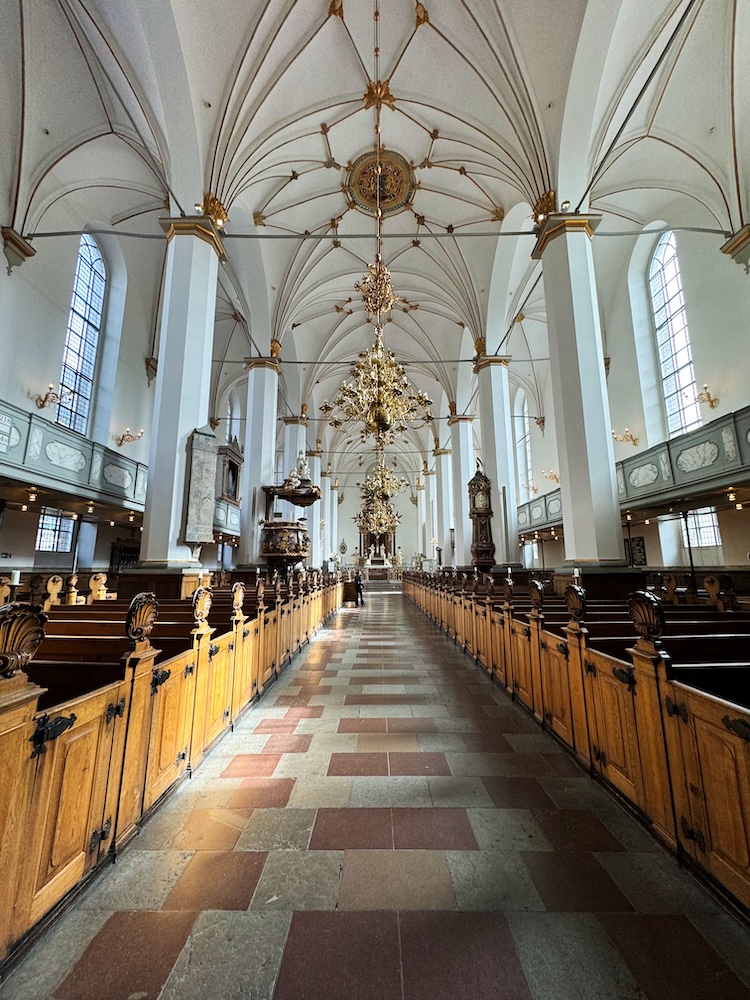
Five Churches in Copenhagen to Visit
This is not an exhaustive list of all of the churches in Copenhagen that you can visit, but rather a list of five churches that you as a tourist should consider. I’ve visited four of the five of these churches and only skipped the last church because of its hours.
So while I do believe some of the churches on this list are better than others, I think each is worth a visit. And did I mention that it is free to visit the interior of all of these churches? Note that climbing the towers typically costs extra.
Frederiks Kirke
I’m starting this list off with my favorite church in Copenhagen and that’s Frederiks Kirke. So what’s the significance of Frederiks Kirke?
This church is also known as the “Marble Church” for its interior decor. It sits in the Ameliasborg Square, which contains the church as well as Ameliasborg Palace. This area is where the current King of Denmark resides. It was built in the late 1700s after a fire burned down the royal palaces. Unsurprisingly, it was built with an air of luxury, which is especially evident in Frederiks Kirke.
Entry to Frederiks Kirke is free.
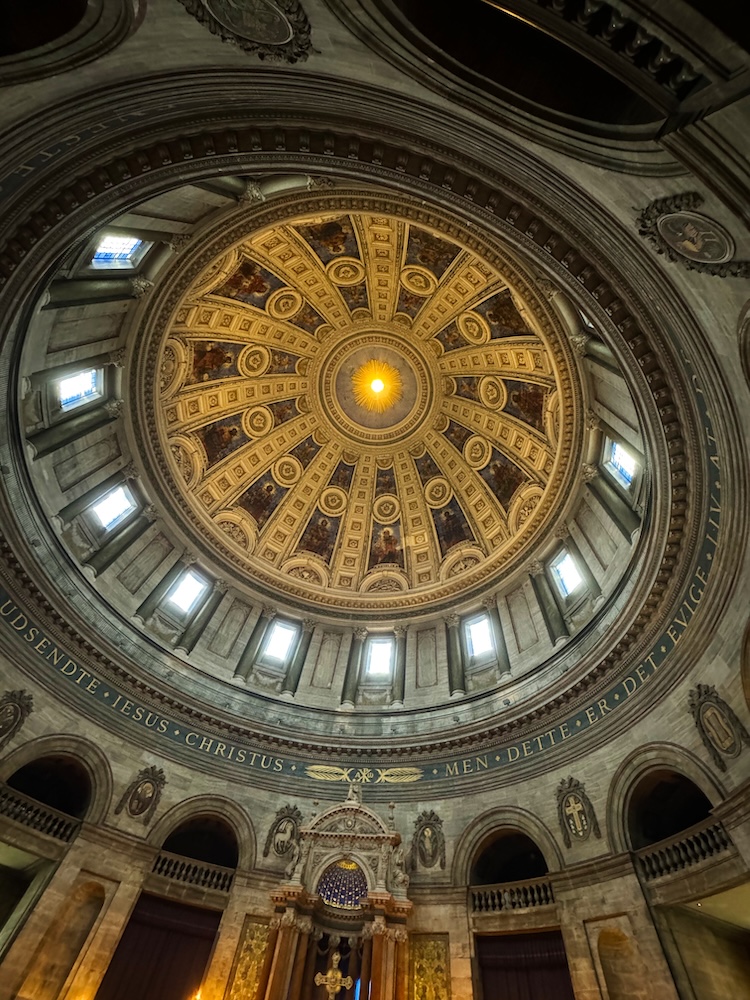
Trinity Church (Trinitatis Church)
The next church on my list is perhaps more famous for its tower than for the church itself (similar to another church on this list). Trinity Church is connected to the Rundetaarn (or Round Tower) which offers a view of the city of Copenhagen. During my visit, there was a line to go up the tower, but very few people in the church. What I found interesting was that the line wound way through the tower and within the tower there is a glass door where you could see the inside of the church. I saw plenty of tourists stop to take photos through the glass, but few tourists actually stepping foot inside the church.
Is it their loss or mine (since I didn’t climb the tower)?
Entry to Trinity Church is free, but if you want to climb the Round Tower, you’ll need to pay extra. Tickets for the round tower cost 40 DKK. Learn more at the church’s website.
If you are interested in the Round Tower, you should know that it’s the part of the oldest functioning observatory in Europe.
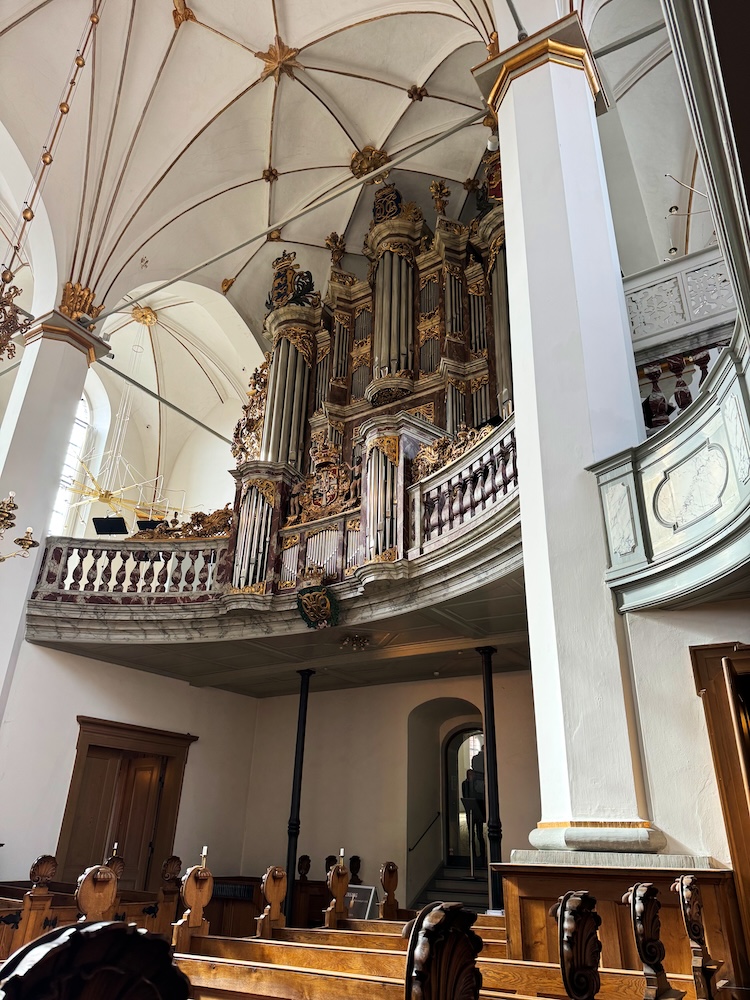
Church of Our Lady (Vor Frue Kirke)
A short stroll away from Trinity Church brings you to the Church of Our Lady.
From the outside, the church doesn’t look that impressive. To an extent, the interior is only moderately impressive, depending on the churches you compare I to. I found it to be impressive for a Scandinavian church, but it pales in comparison to churches in some other parts of Europe.
The Church of Our Lady is a Lutheran Church, although when it was built, it was Roman Catholic. The transition came during the Protestant Reformation during the 1500s.
The first church (known then as St. Mary’s) was built in the 1100s, but various disasters over the years (ranging from fires to lightning strikes) forced the church to be rebuilt. The church you see today was built in the 1800s and has a Gothic exterior and Neoclassical interior.
If you walk through the church and find yourself only marginally impressed, consider that this church has held the coronations of Kings and royal weddings.
Entry to the Church of Our Lady is free.
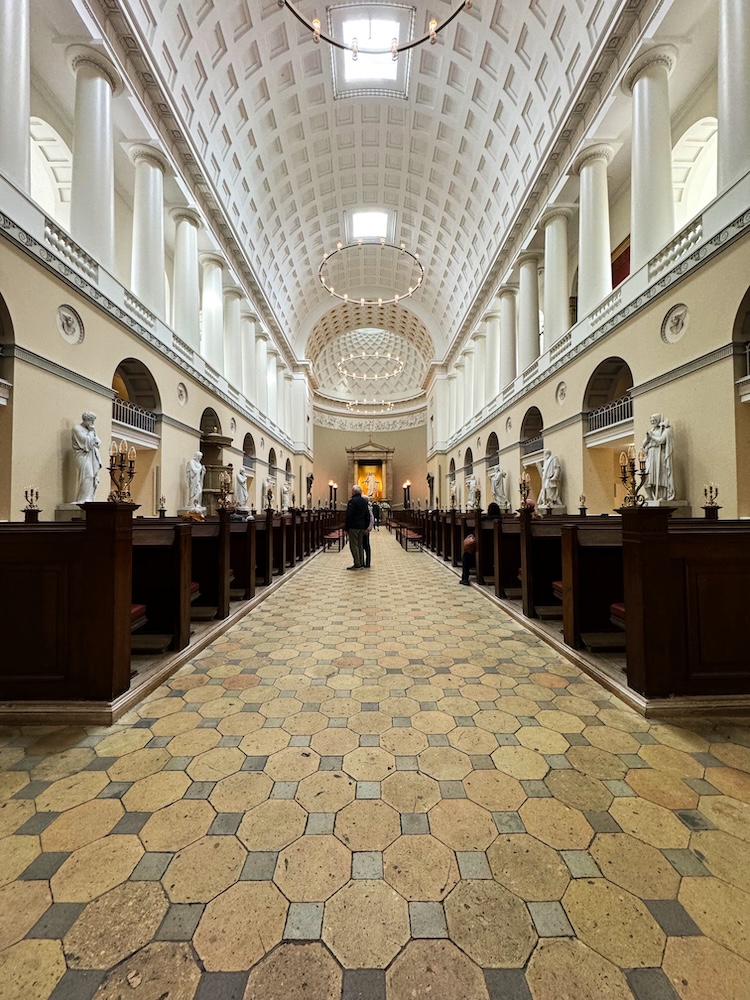
Church of Our Savior
This church may be one of the most famous in Copenhagen. If you’ve seen any photos of a church with a spiral bell tower, it’s the Church of Our Savior.
The Church of Our Savior is right nearby Christiania and I think it’s worth a quick stop if you’re already in the area (which you likely will be at some point during your trip to Copenhagen).
The church itself is free to visit, but it costs 69 DKK to climb the spiral tower. Before you visit, double check the hours of the church. I found that the hours were a bit different than many of the other sights. And don’t be surprised if the church closes for tourism. There was a funeral during my visit so I couldn’t visit inside.
If you plan to climb the tower, you’ll need to purchase a ticket online. You can do it in advance or you can wait until you arrive, but either way, be prepared to purchase the ticket on your phone.

St. Peter’s Church
This is the one church on this list that I didn’t visit. It’s not that I purposely skipped it, but rather the church has very limited hours and it was never open during my visit to Copenhagen. You may find something similar so don’t be surprised if you are only able to visit this church from the outside.
Like other churches in Copenhagen, it was originally built as a Catholic church, but was converted to Lutheran during the reformation. Historically, this was the church for the German speaking population of Copenhagen.
Entry to the church is free, but hours are extremely limited.
Which Church Should You Visit
I don’t think you could go wrong with any church on this list. However, if I’m playing favorites and have to church the best church in Copenhagen, it has to be Frederiks Kirke. If you’re looking for a church with a bell tower with an excellent view of Copenhagen, I’d recommend the Church of Our Savior.
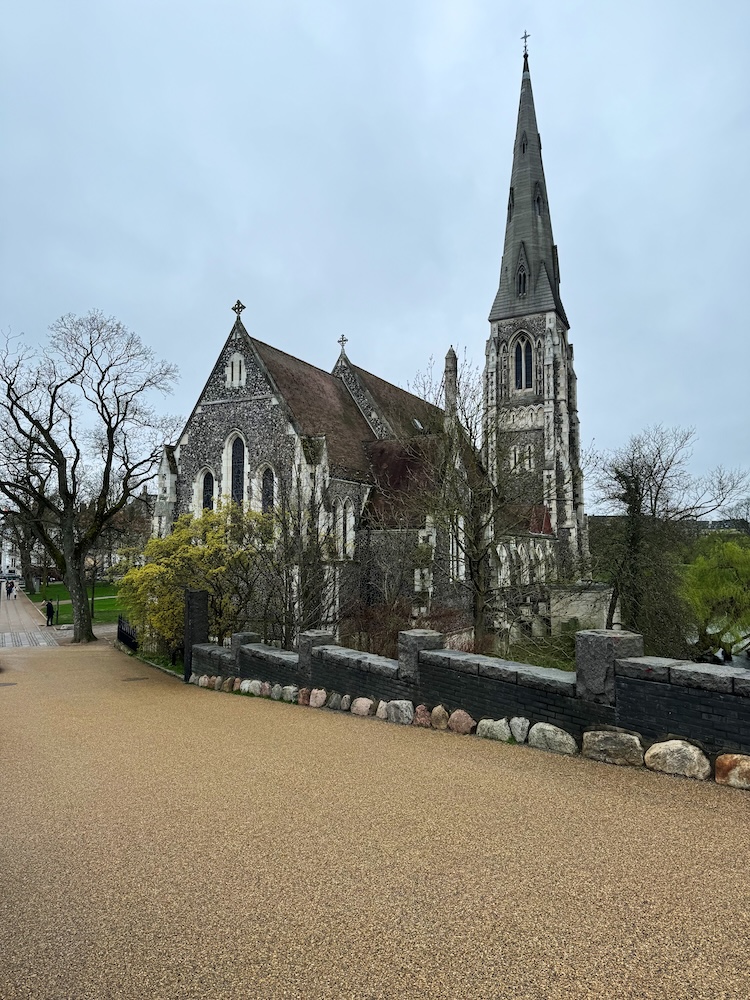
When to Visit Copenhagen
Winters have the fewest visitors and therefore you can expect a slightly lower price. However, winters have the worst weather (expect it to be cold) and have limited daylight. For example, in Copenhagen, the sun rises around 8:30 am and sets at about 4:00 pm in January.
Summers have long days with the sun not setting until 9:00 or 10:00 pm. You’ll also have the best weather. However, crowds are at their highest.
Typically, shoulder season can offer the best mix between daylight hours, weather, and tourist crowds. But I personally would recommend traveling very late spring to very early summer or very late summer into very early fall. Basically, try to catch that cut over between spring and summer or summer and fall.
I traveled in mid April and while the weather was ok, it wasn’t great. Plus some sights still had limited hours. If I were to do this trip again, I’d aim for mid to late May.
Getting Around Copenhagen
Copenhagen has a decent public transportation system. Notice that I say “decent” instead of “excellent”. The metro is very efficient and you’ll find buses and trams throughout the city as well. However, I found that for the routes I was taking throughout Copenhagen, public transportation just wasn’t ideal. My 25 minute walk might have been shortened to a 20 minute walk and with the high cost of the metro (24 DKK per ride), I just didn’t find much use for it beyond transferring from the airport.
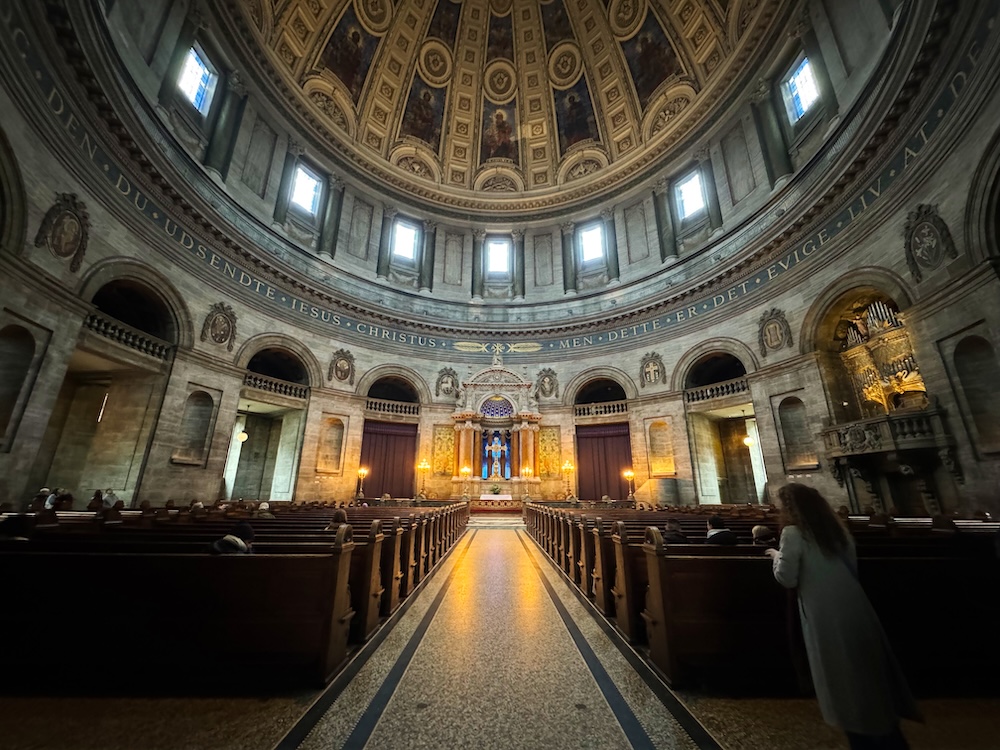
Final Thoughts
I still maintain that it’s not a list of things to do in Europe unless it has at least one church on that list. So, with this list, you can make sure to add at least one to your Copenhagen itinerary.
Now, you may find yourself wondering if these are the most magnificent churches in Europe. The answer is a firm and objective no (although I was impressed by Frederiks Kirke). There are much more spectacular churches throughout Europe. However, that doesn’t mean that these churches should be visited. I find the differences in opulence and grandness between churches fascinating. Plus, the churches are free, so you really don’t have a good excuse to skip all of the churches in Copenhagen.
Continue Your Adventure
Scandinavia: Start planning your trip to Scandinavia with this 10 Day Itinerary or this 7 Day Itinerary, featuring stops in Denmark, Sweden, and Norway. Check out my Scandinavia Budget for a realistic look at travel costs and budgeting tips. Plus, here’s my top tips for traveling Scandinavia.
Denmark: A trip to Denmark would not be complete without a day in the capital city of Copenhagen, including Tivoli Gardens. Plus check out my Denmark Travel Guide.
Sweden: A visit to Sweden will generally include its capital city of Stockholm, which is full of awesome sights and museums. If you have extra time in Stockholm, consider a day trip to either Uppsala or Drottningholm Slott. But don’t miss Gothenburg, another great city that feels more relaxed than Stockholm. Continue your planning with my Sweden Travel Guide.
Norway: While so much of Norway’s beauty is found outside its cities, you can explore the highlights of Oslo with just one day. Plus, check out my Norway Travel Guide.
